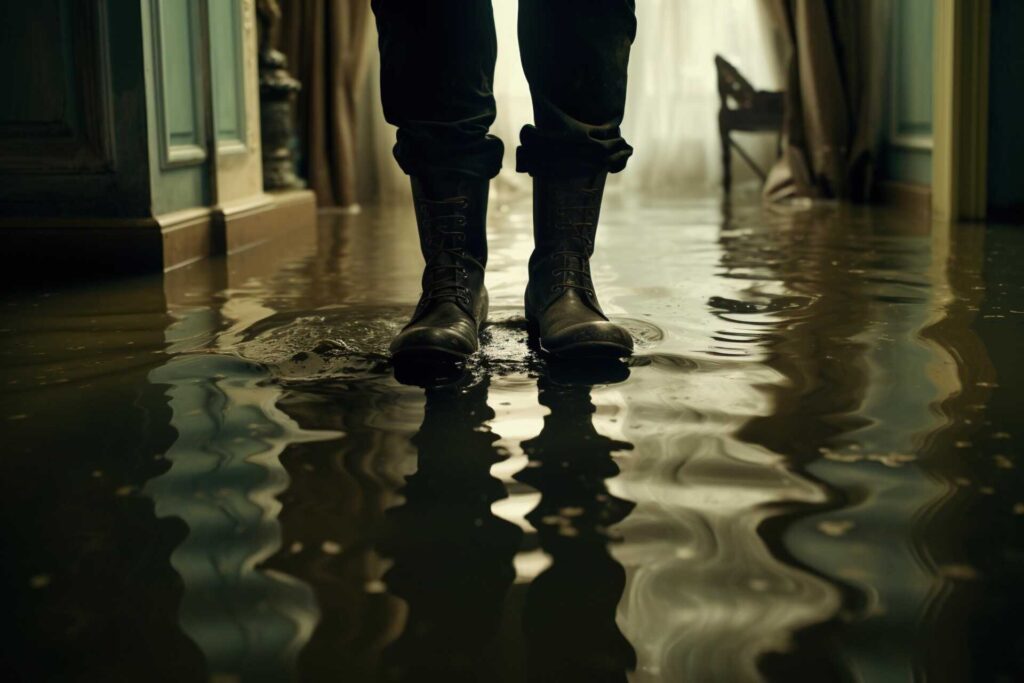
Contents
When water accumulates, acting quickly with water extraction is essential to prevent mold growth. You’ll need to remove standing water immediately, but it’s not just about getting rid of the visible water. The next steps are critical for effective extraction and ensuring your space dries thoroughly. Understanding the right equipment and techniques will make a significant difference. Let’s explore the best practices that can help you tackle this issue efficiently and safeguard your environment from mold.
Key Takeaways
- Act swiftly to remove standing water to minimize mold growth and structural damage.
- Utilize a submersible pump and wet/dry vacuum for effective water extraction.
- Ensure thorough drying with dehumidifiers and fans to prevent mold development.
- Regularly monitor for mold growth, especially in hidden areas that may retain moisture.
- Maintain humidity levels below 60% to create a healthy home environment and inhibit mold.
Act Quickly to Remove Standing Water
When water floods your space, act swiftly to remove standing water. Time is critical; the longer water sits, the greater the risk of mold growth and structural damage.
Begin by evaluating the most affected areas, focusing on spots where water accumulates. Use absorbent materials like towels or mops to soak up smaller amounts of water.
For larger volumes, consider enlisting help from friends or family to expedite the process.
Utilize Proper Equipment for Effective Extraction
To effectively extract water and minimize mold risk, you need to utilize the right equipment. Choosing the proper tools can greatly enhance your extraction process. Here’s a quick overview of essential equipment:
| Equipment Type | Purpose | Recommended Action |
|---|---|---|
| Submersible Pump | Removes standing water | Use for large volumes of water |
| Wet/Dry Vacuum | Extracts residual moisture | Ideal for smaller areas |
| Dehumidifier | Reduces humidity levels | Run continuously post-extraction |
| Moisture Meter | Measures dampness in materials | Check walls and floors |
| Air Mover | Enhances air circulation | Place strategically for drying |
Ensure Thorough Drying and Ventilation
Ensuring thorough drying and ventilation is essential for preventing mold growth after water extraction. Once you’ve removed excess water, focus on drying out the affected areas completely.
Use dehumidifiers and fans to circulate air, as stagnant moisture creates the perfect environment for mold spores to thrive. Open windows and doors to promote cross-ventilation. This natural airflow helps evaporate the remaining moisture, speeding up the drying process.
Monitor humidity levels with a hygrometer; aim for below 60% to inhibit mold development. Don’t overlook hidden spaces like behind walls or under flooring. If necessary, consider professional help to access these areas for proper drying.
Regularly check for any signs of mold during the drying phase, as early detection can prevent extensive damage. By prioritizing thorough drying and ventilation, you’re ensuring a safe environment and fostering a sense of belonging in a healthy home.
Review
In the race against mold, acting swiftly is your best ally. Think of water like a ticking clock; each minute you delay increases the risk of an unwanted guest. By quickly removing standing water, using the right tools, and ensuring your space dries thoroughly, you’re protecting your property and preserving your health. Remember, a proactive approach today can save you from costly repairs and health issues tomorrow. Don’t let mold take root; stay vigilant and act fast!
Recent Posts
Top Flood Damage Repair Extraction Techniques
When floodwaters rise, the clock starts ticking, much like a ticking time bomb for your
Advanced Methods for Flood Damage Repair
Imagine a family returning home after a severe storm only to find their basement submerged
5 Best Flood Damage Repair Extraction Techniques
Many people underestimate the complexity of flood damage repair, especially when it comes to extraction
